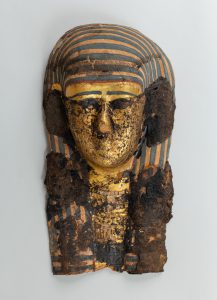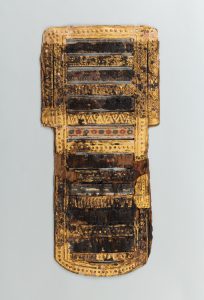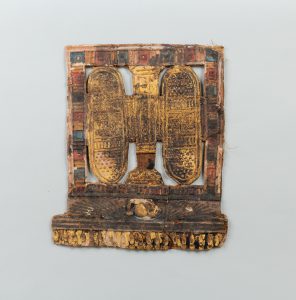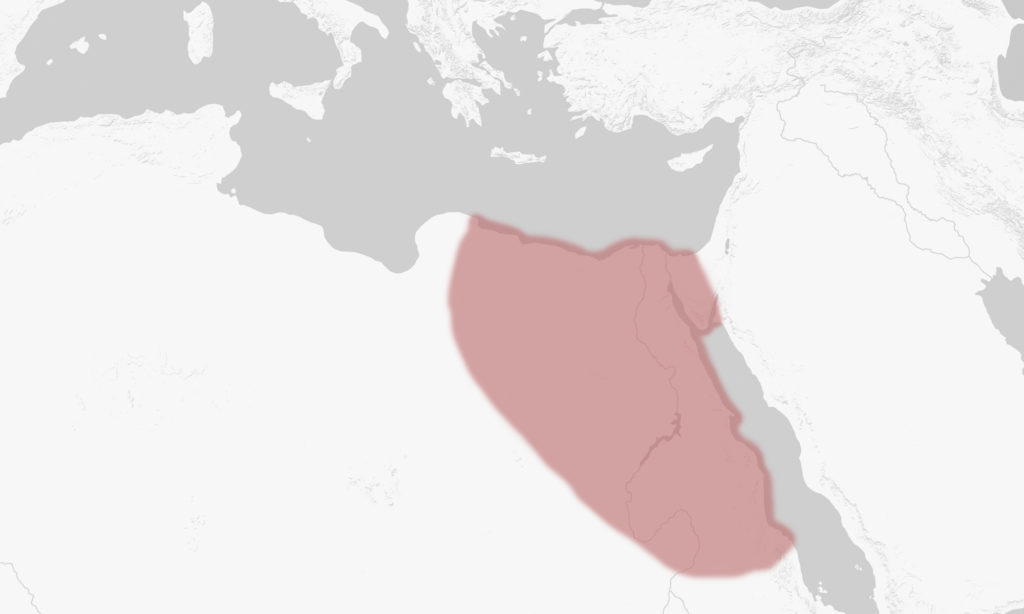
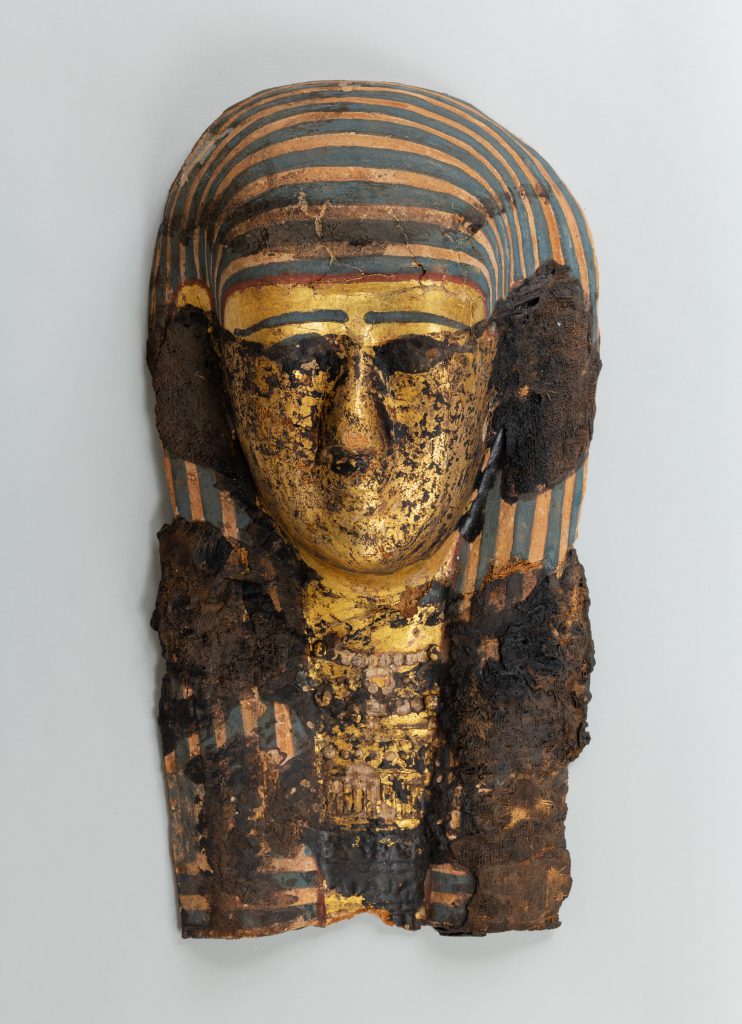

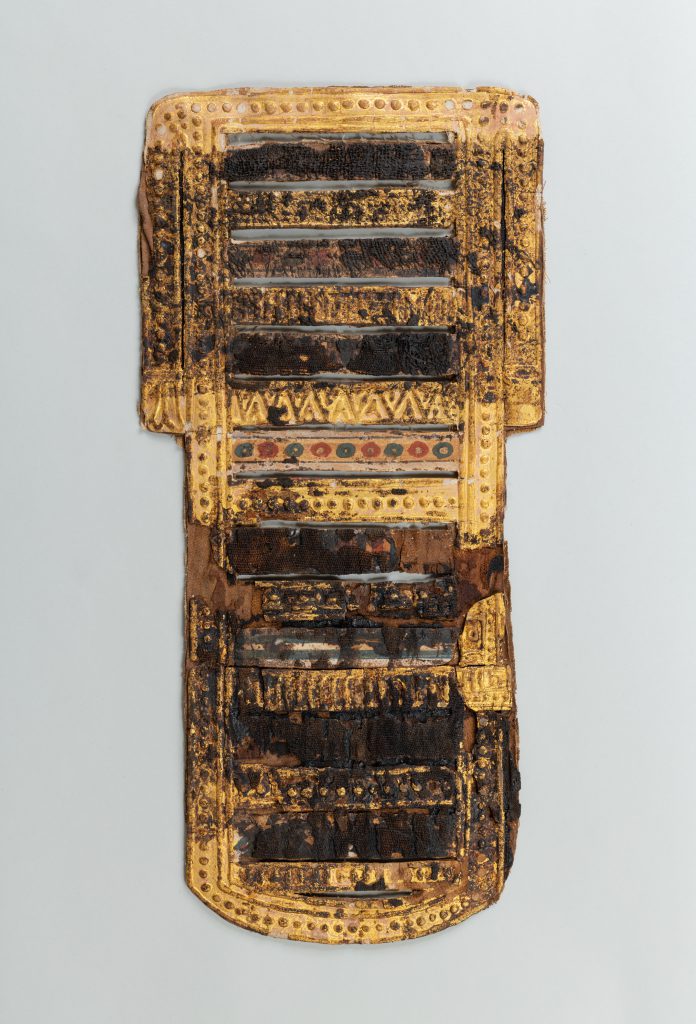
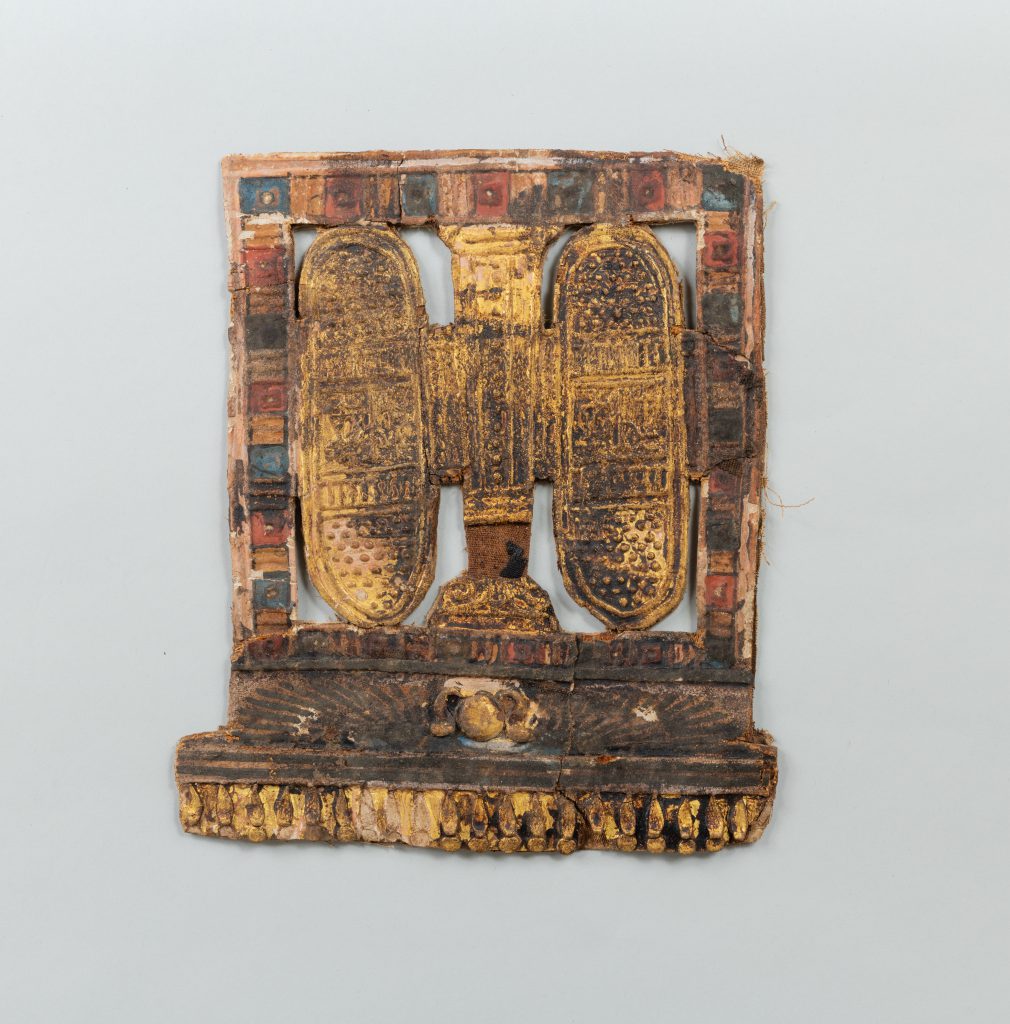
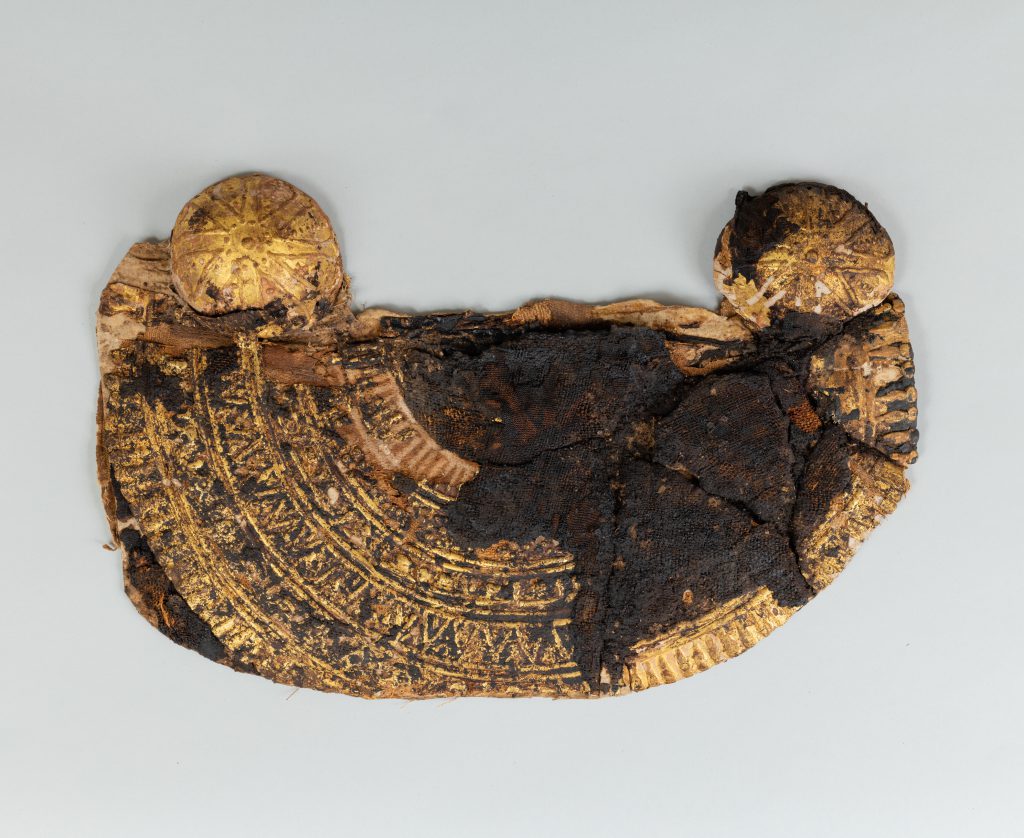
Gift of George Warren Hammond, Honorary Degree 1900, and Mrs. Hammond
1898.42.1-.4During the early Ptolemaic period, from the fourth to second centuries BCE, it was common for a mummy to be adorned with four or five separate components that would cover it from head to foot. Coverings fashioned of painted and gilded cartonnage, a material consisting of layers of linen stiffened with plaster, were wrapped over the mummy before burial. The coverings exhibited here represent four parts from a single mummy consisting of a helmet-mask, a broad wesekh collar, a long rectangular apron, and a panel covering the bottom of the feet. All of the components were secured in place by additional linen and resin, the darkened remains of which are still visible.
The mask was typically the most ornate part of the ensemble. The portrait mask was placed over the mummy’s head so that the dead person’s soul (ka) could recognize its owner. The gilding upon the face was meant to imitate the golden skin of divinity and indicates the deceased transformed into a god. The face is framed by a blue-striped tripartite wig with a multi-strand beaded necklace across the upper chest.
The wesekh, literally “the broad one” in ancient Egyptian, would have been placed across the upper torso of the mummy. The cartonnage example exhibited here was modeled to resemble an elaborate multi-strand collar of alternating bands of beads and pendants held together by two spherical clasps.
The apron panel would have been positioned over the legs of the mummy and recalls the ornate and colorful accessories, often belted, worn by Egyptians over the traditional white linen garments. The apron consists of sixteen bands of alternating painted and gold-leaf decoration surrounded by a gilded border of beads. To approximate details of an actual apron, the cartonnage example includes the additional strands of beads at the top, positioned near the waist of the mummy, representing the loose ends of the securing belt.
Positioned to cover the bottom of the feet, the foot panel was shaped and decorated to resemble a temple façade that frames the soles of the mummy’s sandals. The soles are situated on both sides of a single fluted column that culminates in a capital with floral design. As in many examples of Egyptian temple architecture, a frieze with a winged sun-disk flanked by two cobras (uraei) is located above the columnar façade, which is finally crowned by a gilded row of rearing cobras, each wearing a solar disc.
Before 1898, Hammond Collection; 1898, acquired by the Bowdoin College Museum of Art, gift of George Warren Hammond and Ellen Sarah Sophia Hammond
Collector
In 1897, Hammond became the first donor to expand the ancient collections since the Walker sisters, with his donation of over one hundred objects including Egyptian, Greek, Roman, and Byzantine objects such as lamps, figurines, funerary artifacts, coins, and glass.

